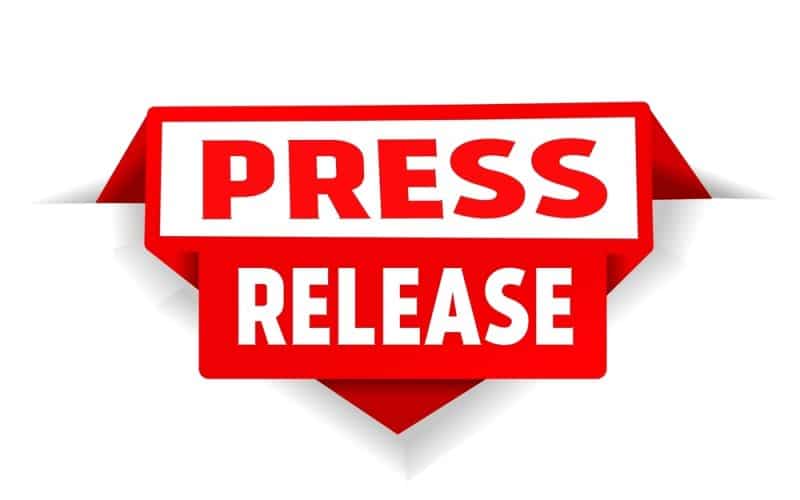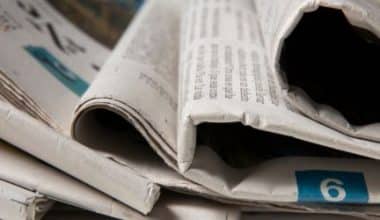Creating an impactful press release headline is crucial for grabbing attention and driving interest. It’s your first shot at grabbing attention and propelling your news into the vast unknown of media outlets. Get it right, and you’ll see your press release soaring across inboxes, sparking journalist interest and igniting a media firestorm. But get it wrong, and your news could fizzle out faster than a damp firework.
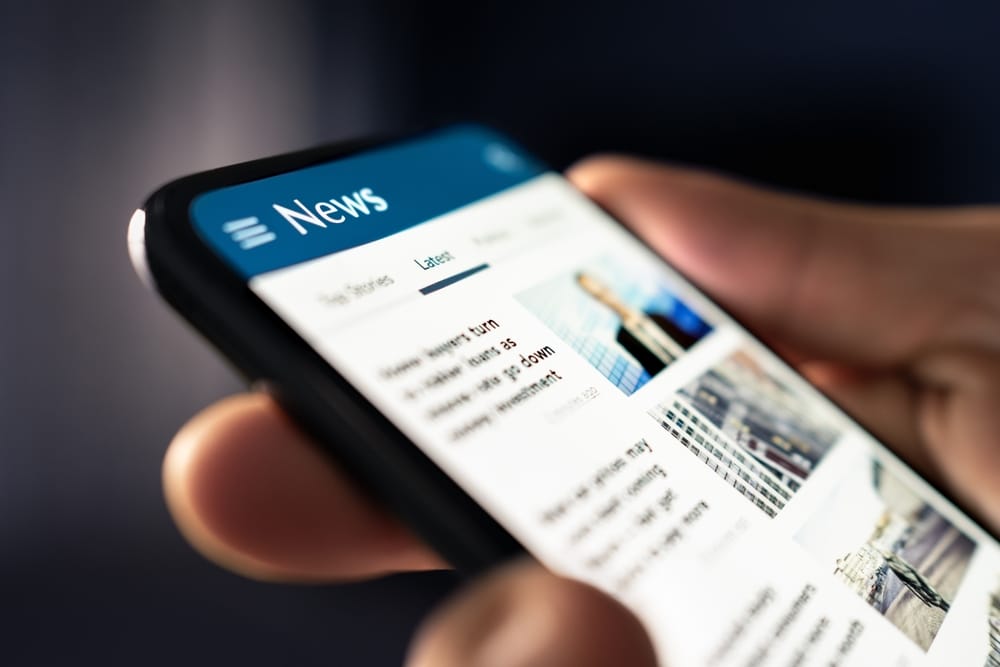
Fear not my intrepid communicator! This guide will equip you with the tools and knowledge to write killer Press Release Headlines. I’ll delve into tools for crafting good headlines, explore captivating examples, and unveil the secrets of starting a press release that hooks readers and launches your press release mission to success. Buckle up, and get ready to write Press Release Headlines that leave a lasting impression!
Key Point:
- A compelling press release headline should be clear, concise, and compelling, capturing attention and delivering valuable information. It should include key elements like who, what, and why, and avoid jargon. A good headline promises valuable information.
- To create a successful press release, follow these eight steps: headline, subheadline, dateline, introduction, body, quotes, boilerplate, and call to action.
- Choose a well-structured template for a professional press release format, including header, dateline, introduction, body, boilerplate, and contact details, to streamline the writing process and ensure essential elements are included.
- Using grammar and spelling tools like Grammarly, Hemingway, and ProWritingAid can help proofread your press release, preventing mistakes and enhancing its credibility and professionalism.
- Tech Innovator unveils AI-Powered Home Assistant, showcasing cutting-edge technology and innovation. Effective headlines capture attention, prompting curiosity about the product’s features and impact on daily life.
What is A Good Press Release Headline?
A good press release headline grabs attention and communicates the essence of the story in a few powerful words. It should be clear, concise, and compelling. In my years of writing press releases, I’ve found that a great headline can draw in journalists and readers alike, making them eager to learn more.
For instance, Instead of “Company X Announces New Product,” go for something like “Company X Revolutionizes Travel with First-Ever Self-Folding Tent.” This headline sparks curiosity like, how does a tent fold itself? Is it perfect for that lifetime backpacking trip I’ve always dreamed of? It also uses a strong verb (“revolutionizes”) and a specific detail (“self-folding”).
A strong press release headline should include key elements such as the who, what, and why of the story. It needs to be specific enough to give a clear idea of the content but intriguing enough to make people want to read on. Using action verbs and avoiding jargon helps in making the headline more dynamic and accessible.
Remember, you have limited space, so pack a punch with each word! A good headline is a promise – a promise of valuable information that solves a problem or fulfills a desire.
READ ALSO: How to Do Competitor Analysis in Digital Marketing: A Step-by-Step Guide
How To Start A Press Release?
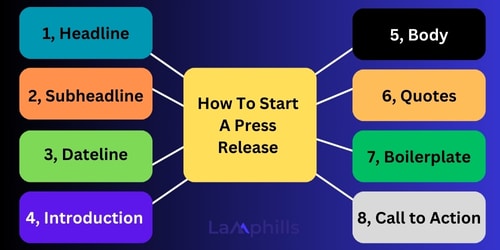
Launching a press release is your chance to ignite media interest and propel your news to the stratosphere. But before you hit “send,” follow these eight essential steps to craft a release that grabs attention and lands smoothly.
- Headline
- Subheadline
- Dateline
- Introduction
- Body
- Quotes
- Boilerplate
- Call to Action
#1. Headline
The headline is the most crucial part of your press release. It should be clear, concise, and captivating, summarizing the core message. For example, “Eco-Friendly Startup Launches Groundbreaking Reusable Product.” In my experience, a compelling headline immediately grabs attention and sets the tone for the rest of the release. It must be strong enough to entice readers to continue.
#2. Subheadline
The subheadline provides a brief expansion on the headline, adding a bit more detail. It should be one to two sentences, giving readers a quick snapshot of what to expect. For instance, “Innovative design reduces plastic waste by 90%, aiming to transform everyday habits.” This addition helps clarify the headline, offering more context and drawing the reader in further.
#3. Dateline
The dateline includes the release date and location. Placing it at the start of the first paragraph helps establish the timeliness and geographical relevance of your news. For example, “San Francisco, CA – June 27, 2024.” This small but important detail provides context and ensures readers know when and where the announcement comes from.
#4. Introduction
The introduction, or lead paragraph, should summarize the most critical information in a few sentences. It needs to answer the who, what, when, where, and why. For example, “XYZ Company is unveiling a new product that will significantly reduce plastic waste. Launching on July 1, this innovation aims to make sustainable living easier for everyone.” This captures the essence of the announcement quickly and clearly.
#5. Body
The body of the press release dives deeper into the details provided in the introduction. This section should be well-organized, providing additional information, statistics, and background. For example, “The new product, made from 100% recycled materials, has undergone rigorous testing to ensure durability and effectiveness. Early adopters have reported a 90% reduction in their plastic waste within the first month of use.” This part of the press release builds on the introduction, offering comprehensive information.
#6. Quotes
Including quotes from key stakeholders adds a human element and credibility to your press release. These should be insightful and relevant. For example, “John Doe, CEO of XYZ Company, states, ‘Our new product is not just a business venture; it’s a commitment to a sustainable future.'” Quotes can provide personal insights and reinforce the message of the press release.
#7. Boilerplate
The boilerplate is a standard paragraph that provides background information about the company. It usually includes the company’s mission, history, and key achievements. For example, “XYZ Company, founded in 2010, has been at the forefront of sustainable innovation. Our mission is to create products that make everyday living more environmentally friendly.” This section helps journalists quickly understand the company’s background and credibility.
#8. Call to Action
The call to action (CTA) directs readers on what to do next. It should be clear and compelling. For example, “Visit our website to learn more about this groundbreaking product and how you can reduce your plastic waste today.” The CTA guides the reader toward the next step, encouraging further engagement with the company or product.
Download Lamphills Headline and Call-to-Action Checklist
Tools for Crafting A Press Release Headline
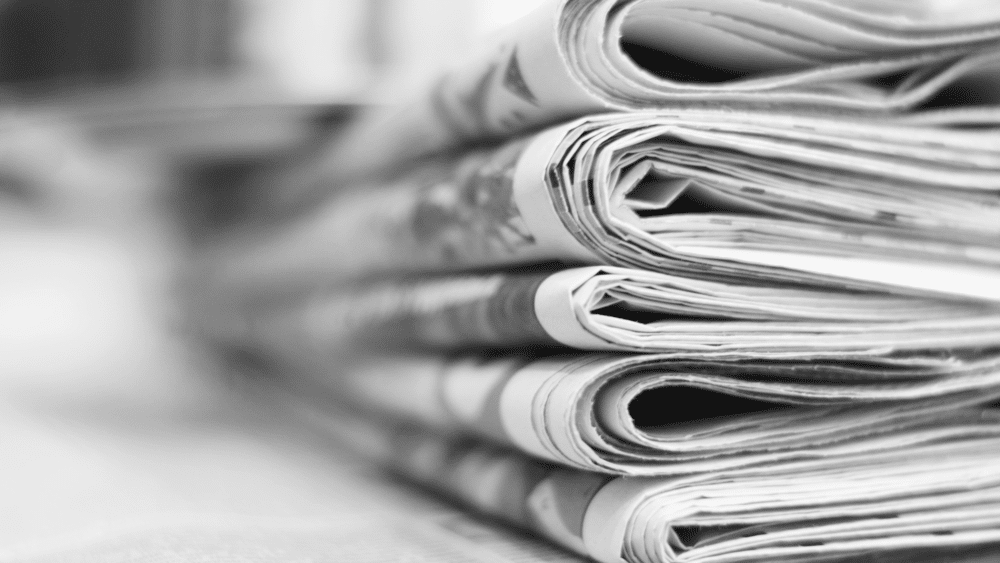
Creating an effective press release requires the right tools and techniques. These tools help ensure that your message is clear, professional, and engaging. Here are the best tools for the job:
#1. Choose a Template
A well-structured template can save time and provide a professional format for your press release. Templates typically include sections for the headline, dateline, introduction, body, boilerplate, and contact details. Using a template ensures consistency and helps you organize your content logically. Websites like HubSpot, Prowly, and PR Newswire offer free press release templates that cater to different industries and purposes. My experience shows that a good template streamlines the writing process and ensures all essential elements are included.
#2. Use a Headline Generator
Crafting a compelling headline is crucial, as it’s the first thing readers see. Headline generators like CoSchedule’s Headline Analyzer, Portent’s Content Idea Generator, and Sharethrough’s Headline Analyzer can help create attention-grabbing headlines. These tools analyze your headline’s effectiveness based on factors like word balance, sentiment, and readability. For example, while working on a press release for a new product launch, I used a headline generator to refine our headline, ensuring it was both catchy and informative.
#3. Add Multimedia Elements
Incorporating multimedia elements such as images, videos, and infographics can make your press release more engaging and shareable. Tools like Canva, Adobe Spark, and Piktochart allow you to create professional-quality visuals that enhance your message. Including multimedia elements helps break up text, making your press release more visually appealing. For my press release announcing a major event, I included a video clip and high-quality images, which significantly increased media coverage and audience engagement.
#4. Check Your Grammar and Spelling
Ensuring your press release is free of grammar and spelling errors is crucial for maintaining professionalism. Tools like Grammarly, Hemingway, and ProWritingAid can help you proofread your content, offering suggestions for improving clarity and readability. In my experience, using these tools has prevented embarrassing mistakes and polished the final draft, making it more credible and professional.
#5. Distribute Your Press Release
Once your press release is ready, you need to distribute it to the right channels. Services like PR Newswire, Business Wire, and Cision provide extensive distribution networks, ensuring your press release reaches a wide audience. These platforms offer targeting options, allowing you to reach specific industries or geographical regions. When I used PR Newswire for a client’s product launch, the targeted distribution helped secure coverage in key industry publications, boosting the press release’s impact.
#6. Here’s What Else to Consider
Beyond the basics, consider the timing of your release, the inclusion of relevant keywords for SEO, and the follow-up with journalists. Timing can affect the visibility and pickup of your press release, so schedule it strategically. Incorporating keywords to improve search engine ranking can make it easier for interested parties to find your release. Finally, follow up with journalists and media outlets to ensure they received your press release and offer additional information if needed. From my experience, personal follow-ups can lead to more in-depth coverage and stronger media relationships.
READ ALSO: Best Influencer Management Platforms and Software In 2024
What Are The 7 Parts of A Press Release?
The part to the success of any press release lies with the content’s ability to grab the reader’s attention, each and whenever the blog is read by the reader. Here are 7 parts of a press release:
#1. Headline
The headline is the first thing readers see and must capture their attention immediately. It should be clear, concise, and compelling, summarizing the essence of the press release in one short sentence. A strong headline often includes action verbs and avoids jargon, ensuring it is accessible and engaging for a broad audience.
#2. Dateline
The dateline includes the release date and the location from which the press release originates. It appears at the beginning of the first paragraph. This element helps readers and journalists quickly identify the timeliness and geographical relevance of the news, adding context to the announcement.
#3. Introduction
The introduction, or lead paragraph, provides a brief overview of the most critical information. It answers the “who, what, when, where, and why” of the story, giving readers a snapshot of the announcement. This section should be engaging, encouraging the audience to continue reading for more details.
#4. Body
The body of the press release expands on the introduction, providing additional details and supporting information. This section includes quotes, statistics, and background information, structured in a way that maintains the reader’s interest. Each paragraph should build on the previous one, creating a coherent and compelling narrative.
#5. Boilerplate
The boilerplate is a standard paragraph at the end of a press release that provides background information about the company or organization. It often includes the company’s mission, history, and key achievements. This section helps journalists quickly understand the context and credibility of the issuer, making it easier to write a story.
#6. Call To Action
The call to action (CTA) directs readers on what to do next. This could be visiting a website, contacting for more information, or attending an event. The CTA should be clear, concise, and compelling, providing a straightforward path for the reader to engage further with the content or organization.
#7. Media Contact Details
Media contact details provide journalists with the necessary information to reach out for further inquiries. This section typically includes the name, phone number, email address, and sometimes the title of the media contact person. Providing clear and accurate contact information ensures that journalists can easily follow up for additional information or interviews.
3 Press Release Headlines Examples.
Here are 3 solid examples of good press release headlines:
Example 1: “Tech Innovator Unveils AI-Powered Home Assistant”
This headline captures attention with “Tech Innovator,” signaling something new and exciting. “Unveils” indicates a fresh announcement. “AI-Powered Home Assistant” specifies the product, highlighting its cutting-edge technology. In my experience, such a headline is effective because it quickly conveys the innovation and its relevance. The reader immediately understands that a significant new technology product is being introduced, prompting curiosity about its features and impact on daily life.
Example 2: “Local Nonprofit Launches Initiative to Combat Hunger”
“Local Nonprofit” establishes the organization and community focus. “Launches Initiative” shows action and a new effort. “To Combat Hunger” clearly states the mission. This headline is direct and impactful, ensuring the reader understands the purpose and urgency. In past projects, headlines like this have successfully attracted media attention because they highlight a critical social issue and the active steps being taken to address it, encouraging readers to learn more and potentially get involved.
Example 3: “New Study Reveals Surprising Health Benefits of Dark Chocolate”
“New Study” indicates fresh, credible information. “Reveals” suggests important findings. “Surprising Health Benefits of Dark Chocolate” teases intriguing results. This headline is effective because it promises valuable insights and appeals to readers’ interest in health and wellness. Drawing from my experience, such headlines are particularly successful in engaging audiences because they offer new knowledge on a popular topic, enticing readers to discover the details of the study and its implications.
READ ALSO: 17 Must-Have Content Creation Tools for Social Media Managers
Conclusion
Crafting an effective press release headline is an art that can elevate your news above the noise. With decades of experience in writing press releases, I’ve seen firsthand how a compelling headline can capture attention and drive engagement. Using the right tools and learning from strong examples can help you master this crucial skill.
A great press release headline is clear, concise, and intriguing. It tells the story in a nutshell, drawing readers to it. I remember working on a press release for a groundbreaking medical device. Our headline, “New Device Revolutionizes Heart Surgery,” grabbed immediate attention and led to widespread media coverage. This success reinforced the importance of a powerful headline.
When crafting your press release headline, remember to focus on clarity and impact. Use action verbs and avoid jargon to make your message accessible. Reflect on what makes your story unique and highlight that in your headline. By following these principles, you can create headlines that not only inform but also engage and inspire.
A well-crafted press release headline can significantly enhance your communication efforts. Utilize the tools and examples provided to refine your skills. With practice and attention to detail, you’ll be able to create headlines that effectively convey your message and capture your audience’s interest.
Related Articles
Marketing Communications: Strategies to Amplify Your Brand’s Voice
The Basics of Blogger Outreach Campaigns: Everything You Need to Know
Integrated Communication in the Digital Age
Executive Communications: Strategies for Leaders to Inspire and Influence
